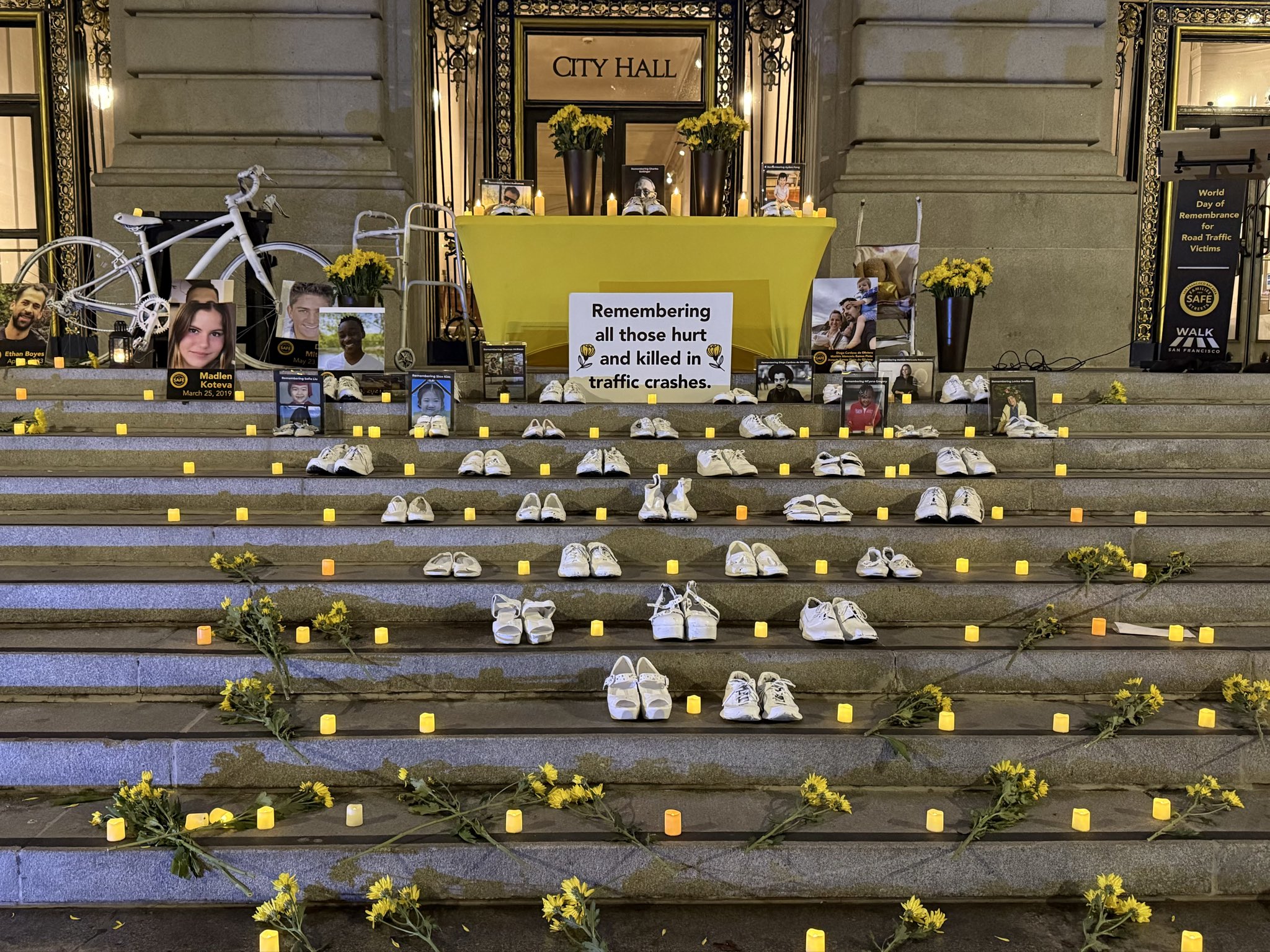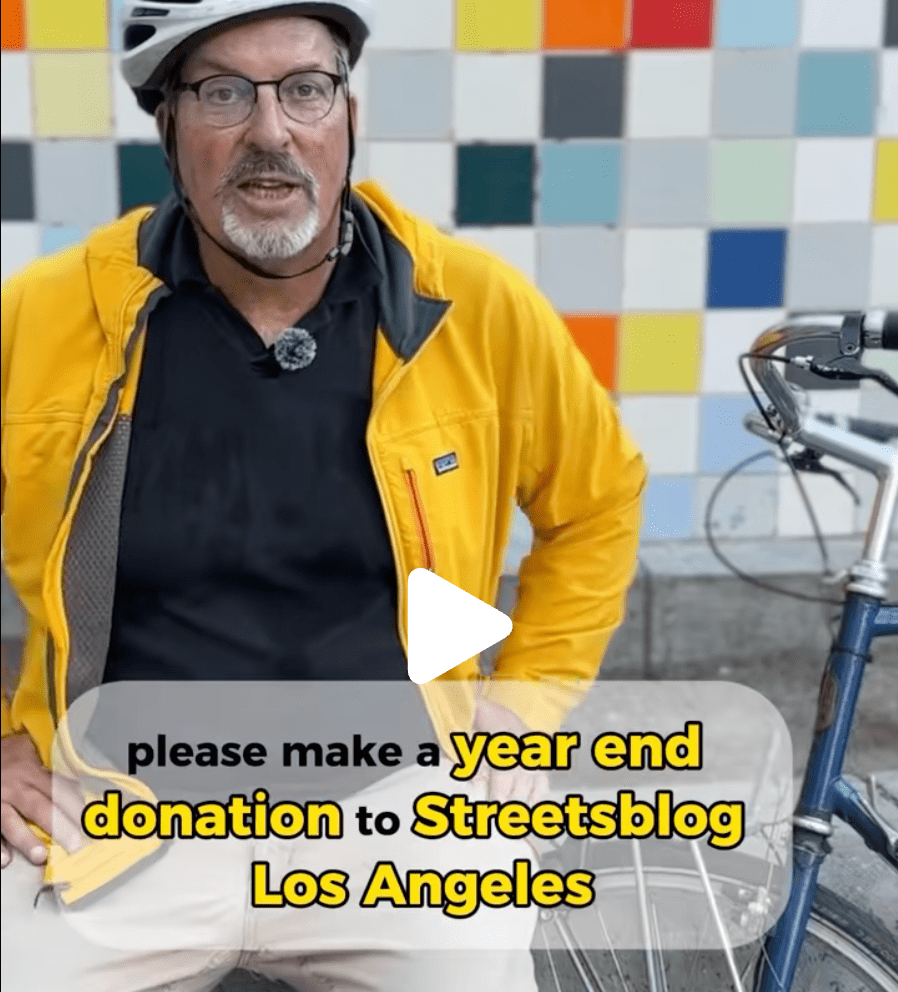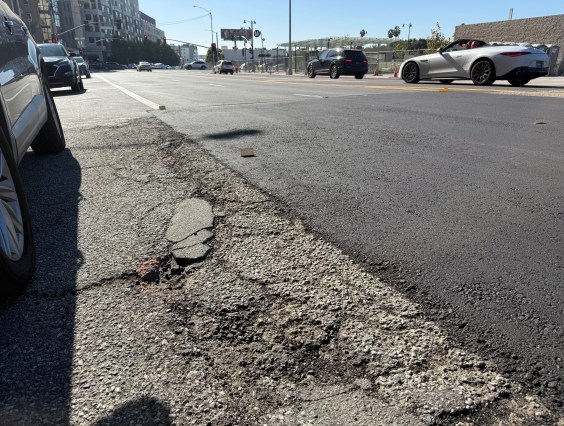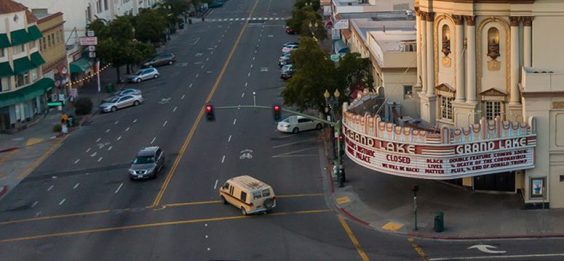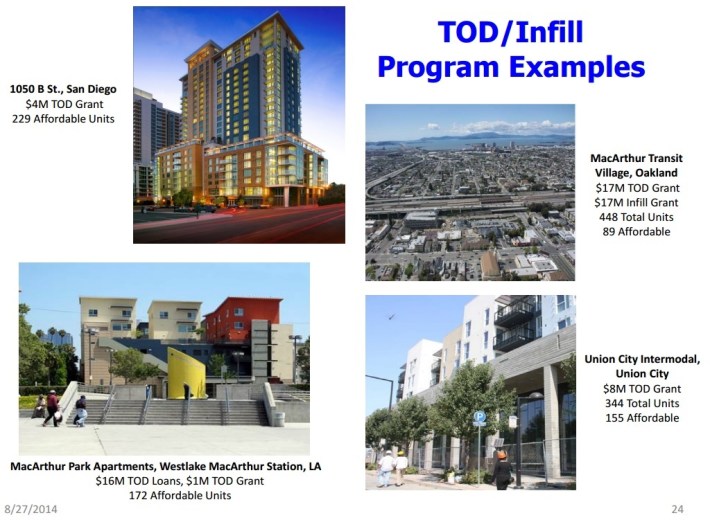
The California Strategic Growth Council is in the midst of a series of public workshops to help it revise guidelines for the Affordable Housing and Sustainable Communities (AHSC) Program. There are two workshops left: one in Oakland tomorrow and one in Fresno on Monday.
The AHSC receives funding from California's cap-and-trade system, and is the only cap-and-trade program that recognizes the role of the connections between land use and transportation in reducing greenhouse gas emissions. See past Streetsblog coverage here for more information about why housing, and in particular affordable housing, is rightly funded by the California Greenhouse Gas Reduction Fund.
The AHSC has the goal of increasing affordable housing near transit, and with the demise of redevelopment is essentially the only state source of affordable housing funds. But housing is only one focus; the program's goals also include increasing opportunities and infrastructure for walking and bicycling, improving transit, and ensuring that the projects it funds benefit disadvantaged communities. Because it has such a wide variety of policy objectives, it has been a complex program to set up and administer.
The first year's guidelines were very complicated, and the revised guidelines are not quite simple. But staff is trying hard to make it easier for applicants while also making it clear whether the projects that are chosen for funding will meet the program's goals.
One key shift in the program is finding a better balance between investments in housing and investments in transit, walking, and bicycling. The new guidelines are “trying to get at direct mode shifts,” said Allison Joe, SGC deputy director, at the first workshop in Sacramento. “Bike parking and repair kiosks are helpful, but we want to incorporate more bike lanes and sidewalks," which have a more direct impact on transportation choices, she said.
The total amount available for any one project will be increased, up to $20 million per application, in this second round of funding.
Project types were clarified, and a new one added. Specifically:
- Transit-Oriented Development (TOD): staff recognized that some transit-oriented areas already have significant investments in transit, so for TOD project areas the transportation infrastructure requirement was eliminated.
- Integrated Connectivity Project areas are required to include transportation or transit investments that directly result in a mode shift from cars.
- Rural Innovation Projects are a new category, in response to concerns that rural areas were not likely to be able to compete against high density projects in urban areas. This gives rural projects a separate pot of money (ten percent of AHSC funds) for which they can compete against each other.
There are also more incentives for collaboration, for example between transit agencies and housing developers, to help create projects that have a better chance of producing greenhouse gas emission reductions.
Under the revised guidelines, there are now five categories of projects eligible for funding under the AHSC:
- Affordable housing
- Housing related infrastructure
- Sustainable transportation or transit-related infrastructure, focusing on mode shift from drive-alone trips
- Transportation or transit-related amenities like benches and shade trees
- Program activities, including transit ridership improvements, community outreach, and Safe Routes to Schools education and incentive programs
The third category above is new, and it was created to “fund more meaningful transportation investments where they're needed most,” according to Joe.
Another key change is that all housing projects must provide at least one secure overnight bike parking space per two units. In addition, there is a new limit on the amount of AHSC funding that can go towards for car parking. Joe stated that the intention of the council is to eventually eliminate all AHSC funding for car parking.
Other changes include revisions in scoring criteria to encourage better and more meaningful community engagement in planning a project – “not just sign-in sheets and flyers, but an active effort that directly effects community needs,” as Joe put it.
Concerns voiced at the first workshop in Sacramento this week included how the scoring would measure “access to destinations,” a key program goal, and whether WalkScore or as-yet-unfinished efforts to create a comparable BikeScore are the right tools. Another concern was whether rural areas remain at a disadvantage because of the difficulty of procuring matching funds, especially for small transportation agencies.
Comments and concerns are due to the SGC by October 30. The next application process will begin in February 2016, when “concept applications” are due. These are short, and meant to determine whether a project is ready to enter the full application process, which can be arduous. Full applications from projects that pass the first stage will be due in April 2016, and funding awards will be announced next summer.
The two remaining workshops are:
OAKLAND
Friday, October 23 from 9 a.m. to noon
Elihu M. Harris State Building, 1515 Clay Street
FRESNO
Monday, October 26 from 1 to 4 p.m.
Hugh Burns State Building, Room 1036, 2550 Mariposa Mall
The guidelines can be found here [PDF].
